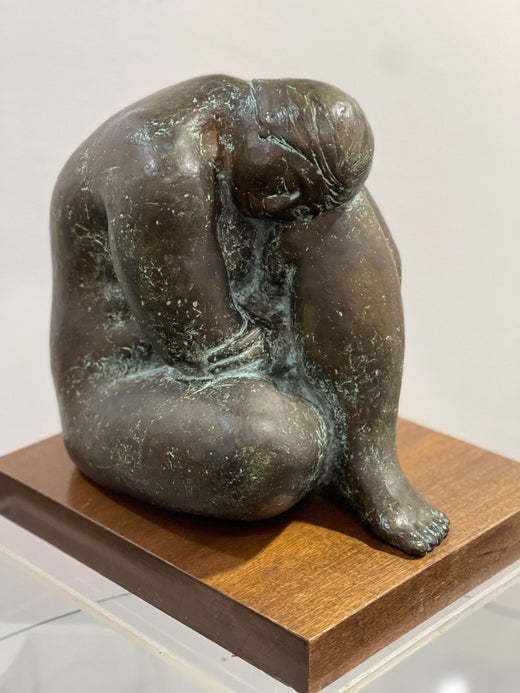Felipe CastañedaFelipe Castañeda, Mujer con Flores, 1982, Black Marble, 20.4 x 12.5 x 13.7 in.1982
1982
About the Item
- Creator:Felipe Castañeda (1933, Mexican)
- Creation Year:1982
- Dimensions:Height: 20.48 in (52 cm)Width: 12.6 in (32 cm)Depth: 13.78 in (35 cm)
- Medium:
- Movement & Style:
- Period:
- Condition:
- Gallery Location:Miami, FL
- Reference Number:1stDibs: LU1613210144712
Felipe Castañeda
The work of celebrated Mexican sculptor Felipe Castañeda represents a harmonious balance of pre-Columbian and modern artistic impulses. His figurative and still-life sculptures have a quiet, contemplative appeal. Working in mediums like marble, onyx and bronze, Castaneda’s female figures explore themes of womanhood, motherhood and fertility.
Castañeda was born in La Paloma, Mexico, in 1933. The area’s abundance of pre-Columbian sites and artifacts no doubt inspired his later work. Interested in art from a young age, Castañeda moved to Mexico City to get closer to the country's artistic scene. He started his studies at La Esmeralda National School of Painting Sculpture and Drawing in 1958, where he discovered a passion for sculpture. Castañeda left school in 1963 and worked at the National Museum of Anthropology and as an assistant to Francisco Zúñiga.
Zúñiga was an Expressionist artist known for his paintings and sculptures featuring indigenous women, which undoubtedly informed Castaneda's style. Castañeda developed a sensual aesthetic highlighting the female form and harking back to the clean lines, classical proportions and thoughtful expressions of Greco-Roman sculpture. He held his first solo exhibition in 1970 in Monterrey, Mexico.
Over the course of his long career, Castañeda has exhibited throughout Mexico, the United States and Europe. He has received commissions for public sculptures in his home country as well as in California. His work is held in the permanent collections at the Museum of Art History in Ciudad Juárez and the Los Angeles County Museum of Art. Castañeda currently lives in Morelia, Mexico.
Find Felipe Castañeda sculptures on 1stDibs.
You May Also Like
Mid-20th Century Post-War Figurative Sculptures
Stone
1980s Post-War Figurative Sculptures
Bronze
1950s Post-War Figurative Sculptures
Chalk
1950s Post-War Figurative Sculptures
Chalk
1950s Post-War Figurative Sculptures
Earthenware
1950s Post-War Figurative Sculptures
Ceramic, Earthenware
1950s Post-War Figurative Sculptures
Ceramic, Earthenware
1950s Post-War Mixed Media
Ceramic, Earthenware
1940s Post-War Figurative Sculptures
Ceramic, Earthenware
1950s Post-War Figurative Sculptures
Ceramic, Earthenware
